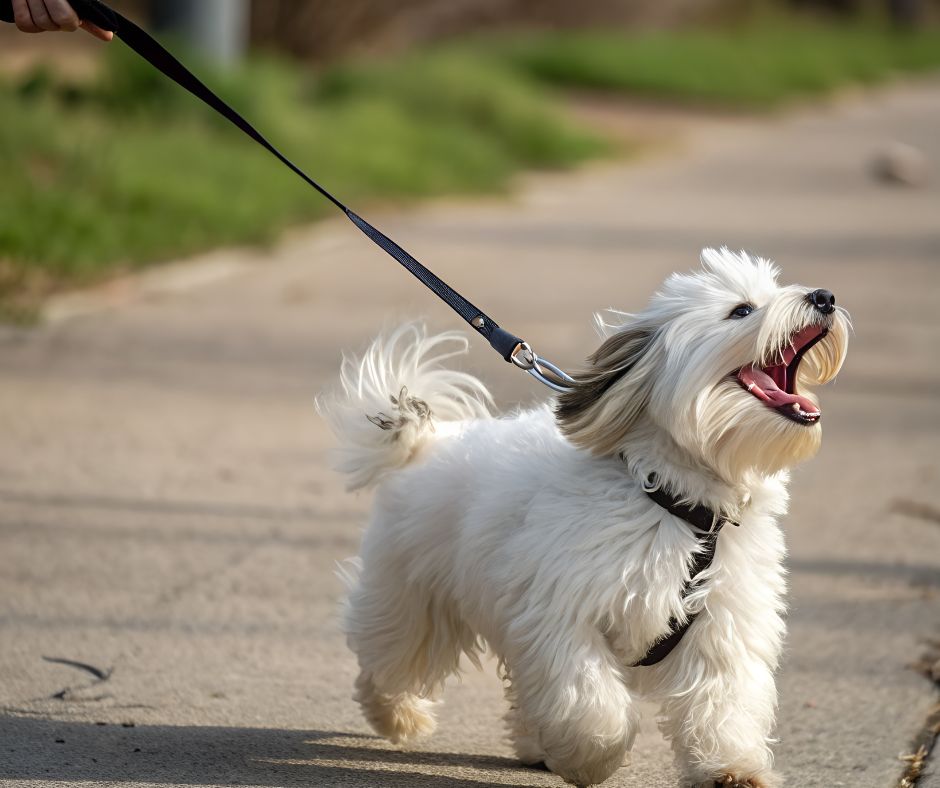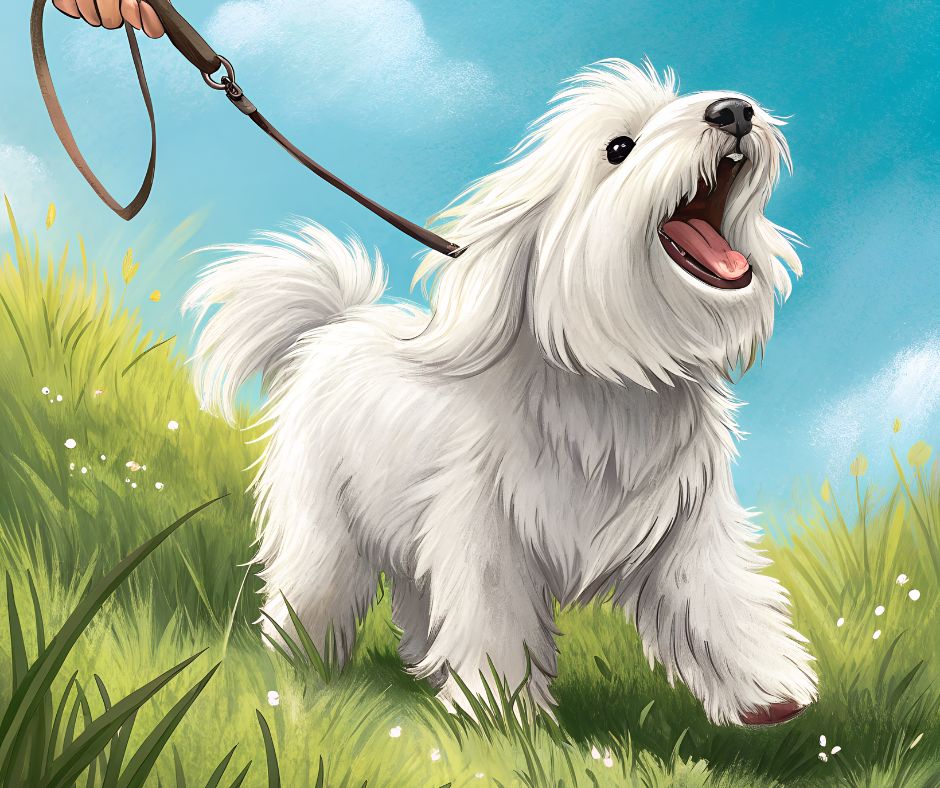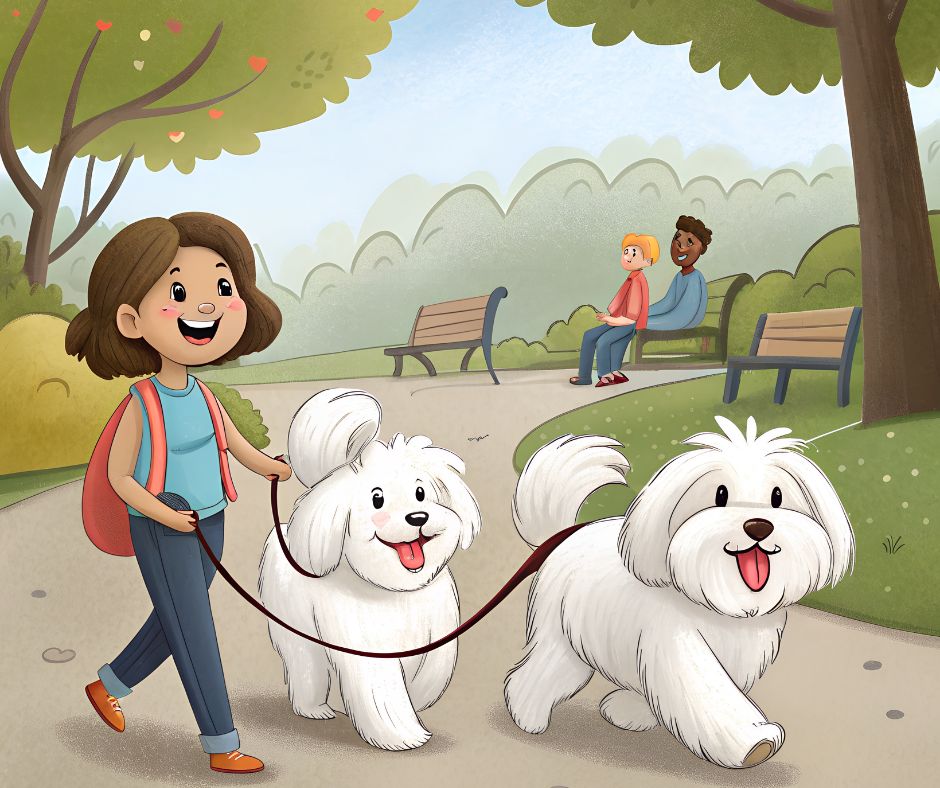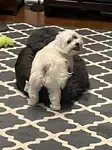How to Prevent Leash Reactivity
What is leash reactivity?

Imagine you're walking down the street, and suddenly, someone you don't like or who makes you nervous appears. If you were with your friends, maybe you'd just walk away, or you'd feel a bit more confident.
But what if you were tied to a pole and couldn't escape? You might start yelling, pulling, or getting really upset because you feel trapped and can't deal with the situation the way you normally would.
For a dog, leash reactivity is very similar:
- "The Trigger": This is usually another dog, a person, a bike, a squirrel, or anything that makes the dog feel uncomfortable, nervous, frustrated, or overexcited.
- "Feeling Trapped": The leash prevents the dog from doing what their natural instincts tell them to do – which is usually to create distance, investigate, or even run away.
- "The Outburst": Because they can't escape or deal with the situation in a natural way, they might bark, lunge, growl, whine, or pull intensely on the leash. It's their way of saying, "Get away from me!" or "I don't know how to handle this!
Why is your dog reacting?
Knowing why a dog is barking, pulling, hiding behind you, or lunging helps tailor the training method to address the root cause, not just the behavior. If you train without understanding the reason, you risk using the wrong approach, like trying to use an umbrella when what you really need is sunscreen.
This table is an overview of the different causes of leash reactivity.
Why the Cause of Leash Reactivity Matters
Understanding the root cause of your dog’s behavior helps you tailor the training method for better, lasting results.
| Cause | What the Dog Is Feeling | Best Training Approach | Why It Works |
|---|---|---|---|
| Fear or Anxiety | “That dog might hurt me!” | Desensitization & counter-conditioning (reward calm behavior at a distance) | Helps the dog feel safe and changes their emotional response to other dogs |
| Frustration | “I WANT to play! Why are you stopping me?!” | Teach calm greetings or alternate behaviors (like Look at Me or Sit) | Gives the dog a structured outlet for excitement and builds impulse control |
| Overstimulation | “There’s so much happening! I can’t focus!” | Use distance + focus games (Look at That or pattern games) | Redirects energy and builds coping skills in stimulating environments |
| Learned Behavior | “I bark, and the other dog goes away!” | Train alternate behaviors + avoid reinforcing barking | Breaks the pattern so barking no longer gets the desired result |
| Protectiveness or Guarding | “I must protect you!” | Build confidence + reward relaxed body language + train focus away from other dogs | Helps the dog feel secure and understand they don’t need to be in charge |
Observation questions
You can answer these questions during or after a walk to help narrow down the cause of the behavior:
- What happened right before your dog barked or lunged?
- What was your dog’s body language like? (tail, ears, eyes, posture)
- Did your dog seem to want to move toward or away from the other dog?
- Does your dog react to all other dogs, or specific types (big, small, certain breeds)?
- How close was the other dog when your dog reacted?
- How quickly did your dog calm down after the trigger was gone?
Below is an action plan you can use based on whether your dog is reacting out of fear, frustration, overstimulation, learned behavior, or protectiveness.

Action plan based on cause of reactivity
Fear or anxiety
1. Start training at a distance where your dog notices other dogs but remains calm.
2. Reward your dog every time they look at another dog calmly (Look at That game).
3. Gradually decrease the distance to other dogs over weeks or months.
4. Avoid punishment and putting your dog in a stressful situation in order to build trust through positive experiences.
5. Pair other dogs with treats, play, or praise to create a positive emotional shift.
Frustration
1. Teach alternate behaviors like 'Look at Me', 'Sit', and 'Wait'.
2. Reward your dog for calm behavior when other dogs are around.
3. Gradually introduce calm, structured greetings with other dogs (if safe).
4. Practice impulse control games like 'Leave it' and 'Stay'.
5. Avoid reinforcing the lunging by never allowing it to result in greeting.
Overstimulation
1. Walk in low-distraction areas and at quiet times.
2. Use distance and visual barriers when needed.
3. Play focus games such as Look at Me or Touch to redirect energy.
4. Keep walks short, structured, and positive.
5. Use calming cues like slow walking, sniff breaks, and treat scattering.
Learned behavior
1. Stop reinforcing the unwanted behavior. Your dog’s barking has been getting them something they want, and they’ve learned that it works, so they keep doing it.
2. Reward your dog for alternate behaviors before barking begins.
3. Use management tools like U-turns or crossing the street to avoid triggering situations.
4. Stay calm and avoid reacting emotionally when your dog barks.
5. Be consistent - don’t let barking sometimes get the result they want. And make sure all members of the family are consistent with training.
Protectiveness
1. Work on building your dog’s confidence through obedience and trick training.
2. Use calm body language and soothing tones when your dog sees another dog.
3. Teach cues like 'Behind me' or 'Let’s go' to guide them away.
4. Reward any relaxed posture or non-reactive behavior near other dogs.
5. Help your dog feel that you are in control and they don’t need to guard you.
Don’t give up. With time and patience your dog walks will be an exercise that you and your dog can enjoy - without the drama.

Home | About Me | Contact Me | Privacy Policy |Disclosure
Copyright© 2008- All Rights Reserved








